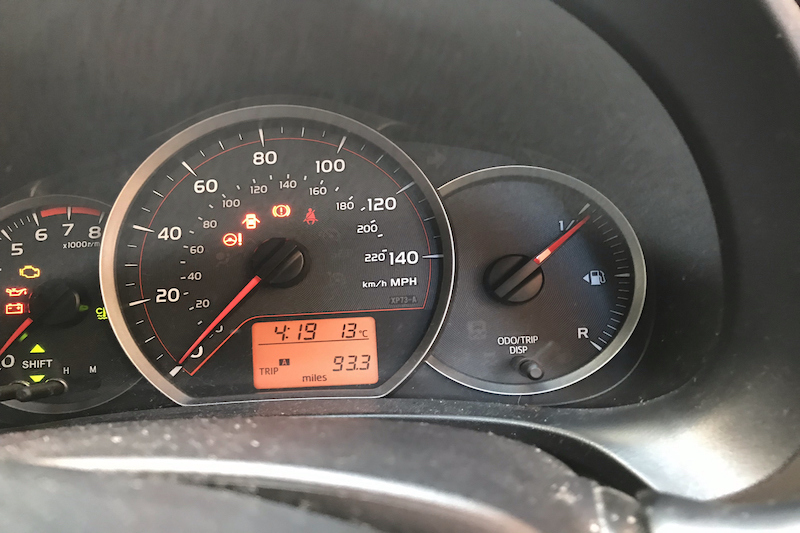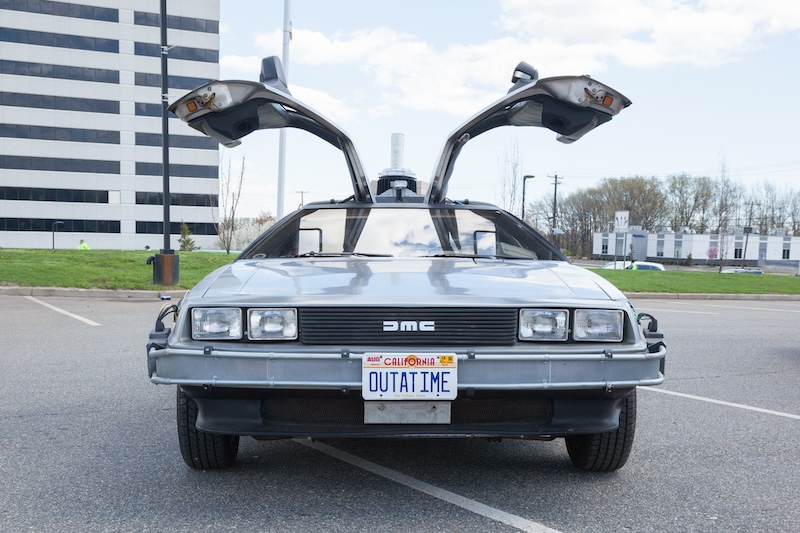7 handy car features you may not know about

Ever wondered if your car has any hidden tricks or compartments? We’ve put together a list of features your car has that you might not know about.
1. Fuel tank locator
People rarely pay attention to their low-fuel warning light beyond noticing that it’s come on and they need to stop at a petrol station. However, if you look closely, you’ll see that there’s a little arrow on one side of the petrol-pump shaped symbol.
This arrow tells you which side of the car your fuel cap is on – very handy when choosing which pump to pull into at a petrol station.
2. Fuel cap holder
While not every make and model of car has a fuel cap holder, it’s becoming an increasingly popular feature.
When you fill up your car, what do you do with the fuel cap? Do you hold it in your other hand? Pop it on the roof? Try to wedge it somewhere and hope it doesn’t roll under the car?
On certain makes of car, the fuel flap has a specific place you can slot the fuel cap into so it doesn’t get in the way.
3. Anti-lock Brake System (ABS)
The modern ABS has been around since the 1970s, and it’s been EU law since 2004 that all new cars sold must be fitted with the safety system – but not a lot of people actually know how it works.
ABS is used to prevent skidding in slippery conditions. Sometimes, when braking on slippery roads, wheels can lock and cause the car to skid. ABS monitors wheel spin and applies alternate braking pressure to the wheels if it senses they’re starting to lock up and lose grip on a driving surface.
4. Colour coding
If you’re not sure how to do things like refill your washer fluid, or where to top up your oil, there’s a simple solution: A colour-coded engine.
Of course, most of the engine is black or grey, but you might have noticed some brightly coloured caps. These all belong to things that you can top up yourself, without the help of a mechanic.
Generally, the washer fluid cap is blue, the dipstick for the oil is yellow (the oil cap will have a yellow oil can on it), the brake fluid cap is black with markings on, and the coolant cap is black with a picture of a radiator on it. However, this is not the same for every make and model of car, so it’s definitely best to check your car manual first.
5. Driver monitoring systems
Rather than checking fuel levels, tyre pressure or other parts of your car, driver monitoring systems look at the person behind the wheel.
Interior facing cameras track eye and head movement to detect drowsiness in drivers and alert them to stop driving and rest. Mercedes have programmed the steering wheel to vibrate if the car begins swerving and then corrects the direction of the car if the driver doesn’t intervene.
6. Fuel-saving frames
Manufacturers are constantly trying to make their cars as fuel efficient and environmentally friendly as possible.
One way to do this is to reduce the weight of the car by changing the material the frame is made from. In 2015, Ford switched from heavy steel to the much lighter, high-strength, aluminium, which made their full-sized pick-up truck 700lbs lighter than the previous year’s model.
Depending on the engine type, this switch has made the aluminium-based cars 5-29% more fuel efficient than previous vehicles.
7. Takeaway hooks
One of the simplest car features, but arguably the best.
Many cars are fitted with tiny hooks, perfectly positioned to hold a bag of takeaway food so it doesn’t spill in the car. The hooks are generally found in the footwell of the passenger seat, or on the headrests of the front two seats.
If you want to know more about how to look after your car, check out our guide on DIY checks and repairs.


